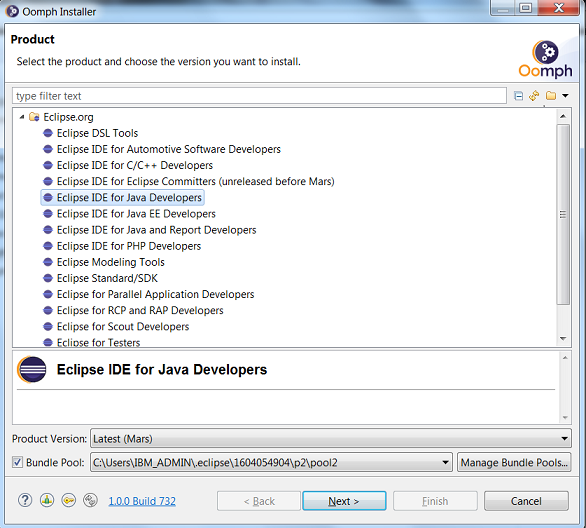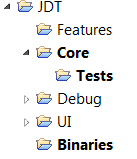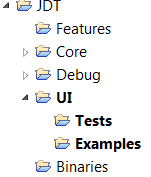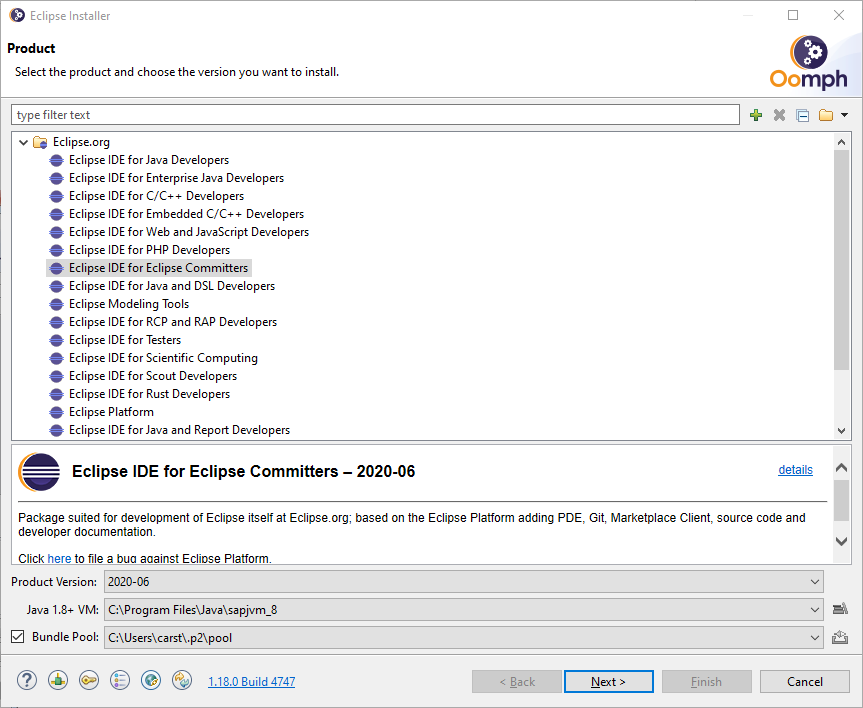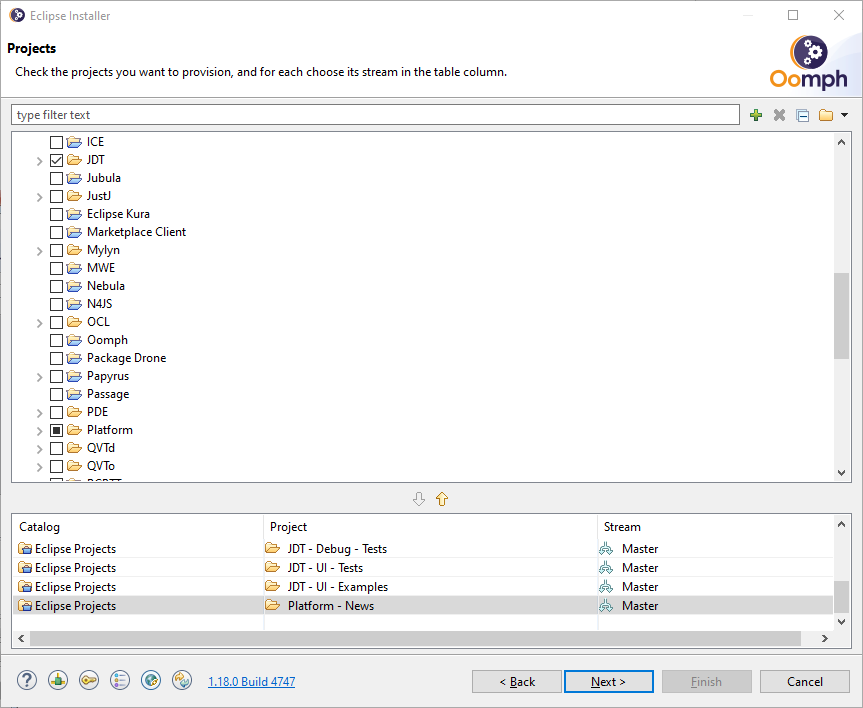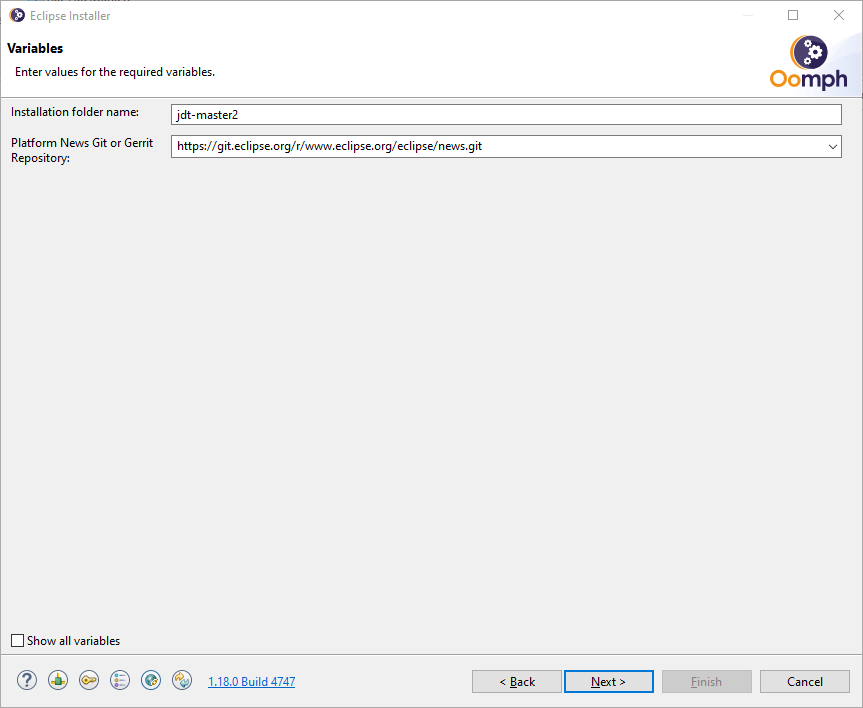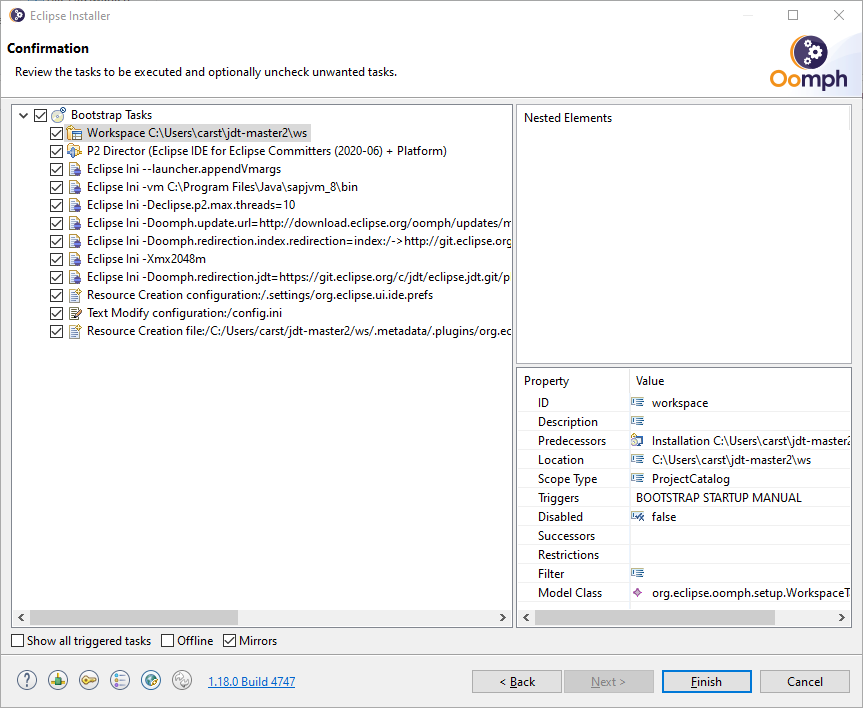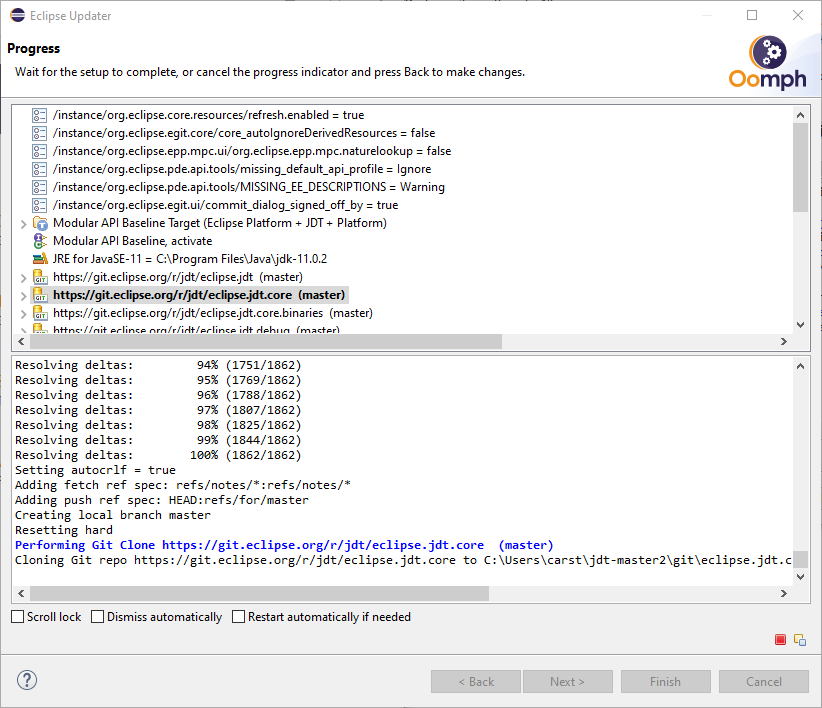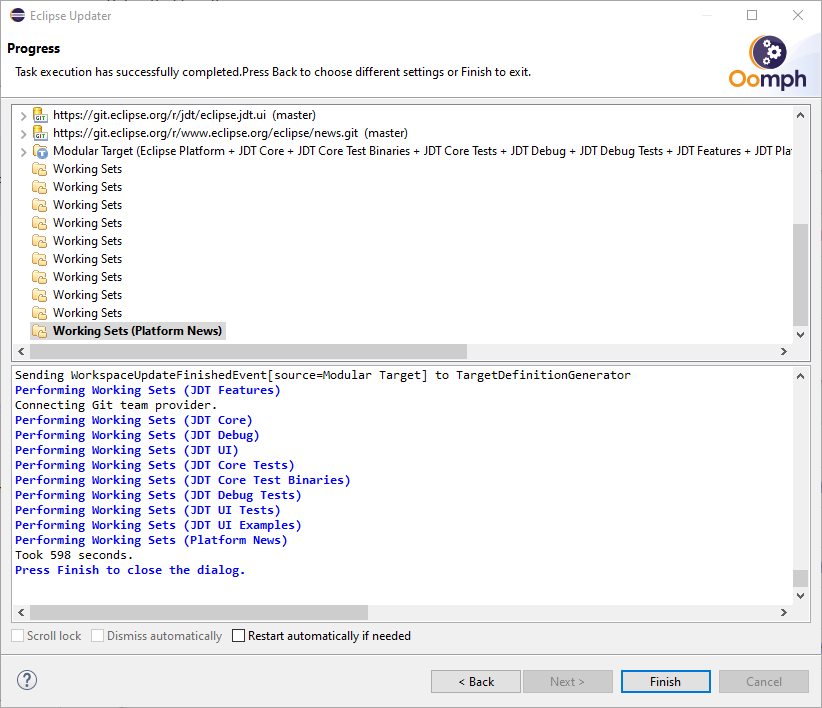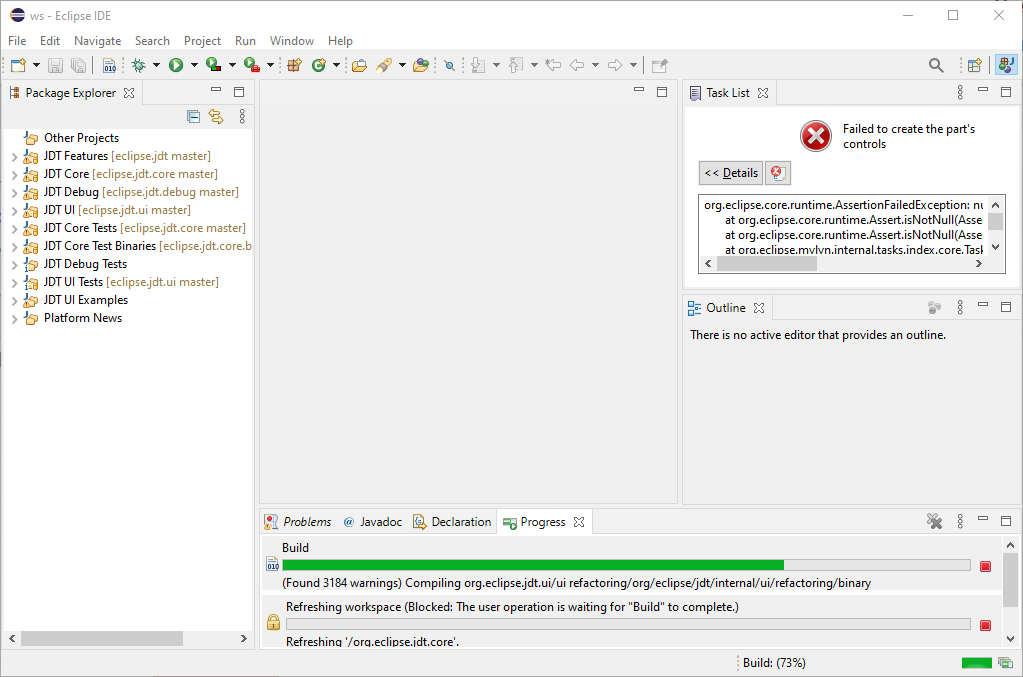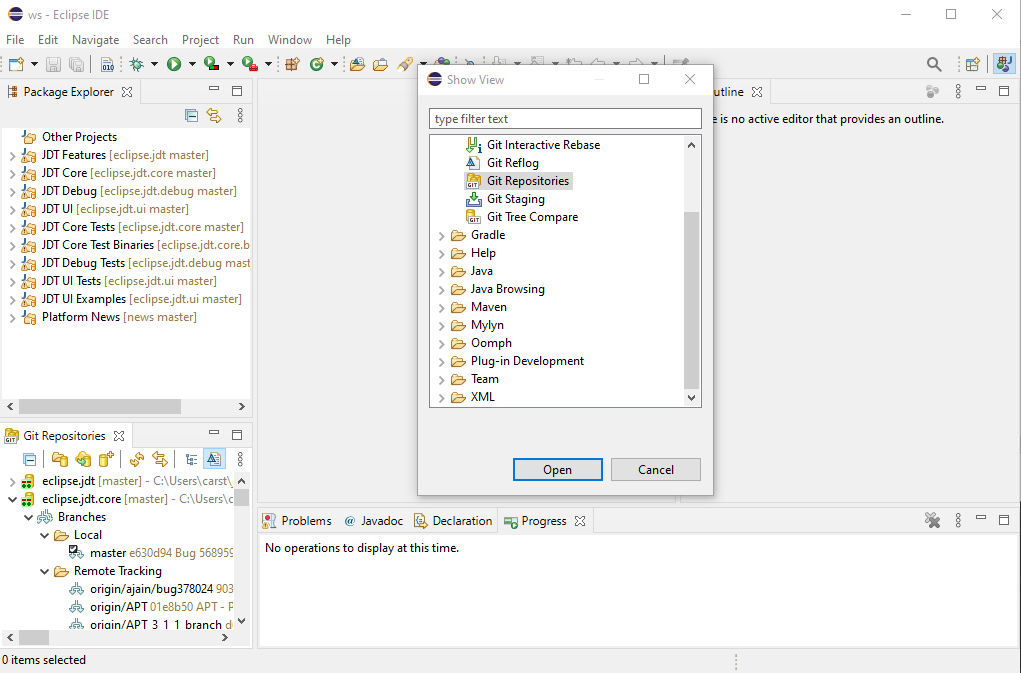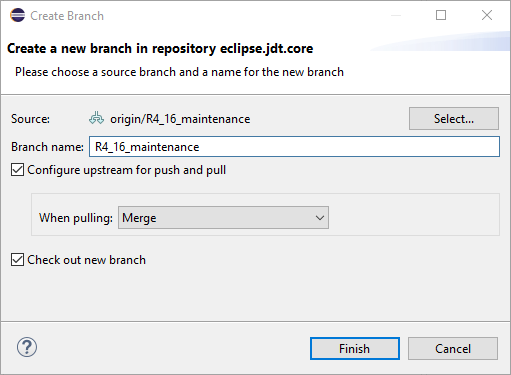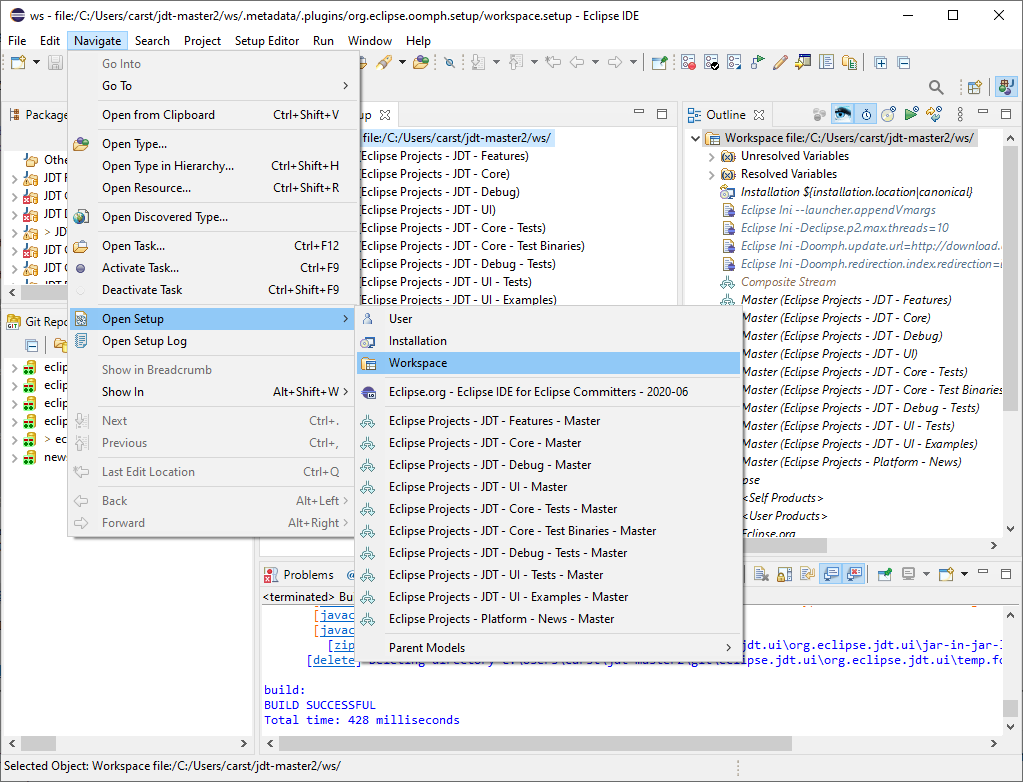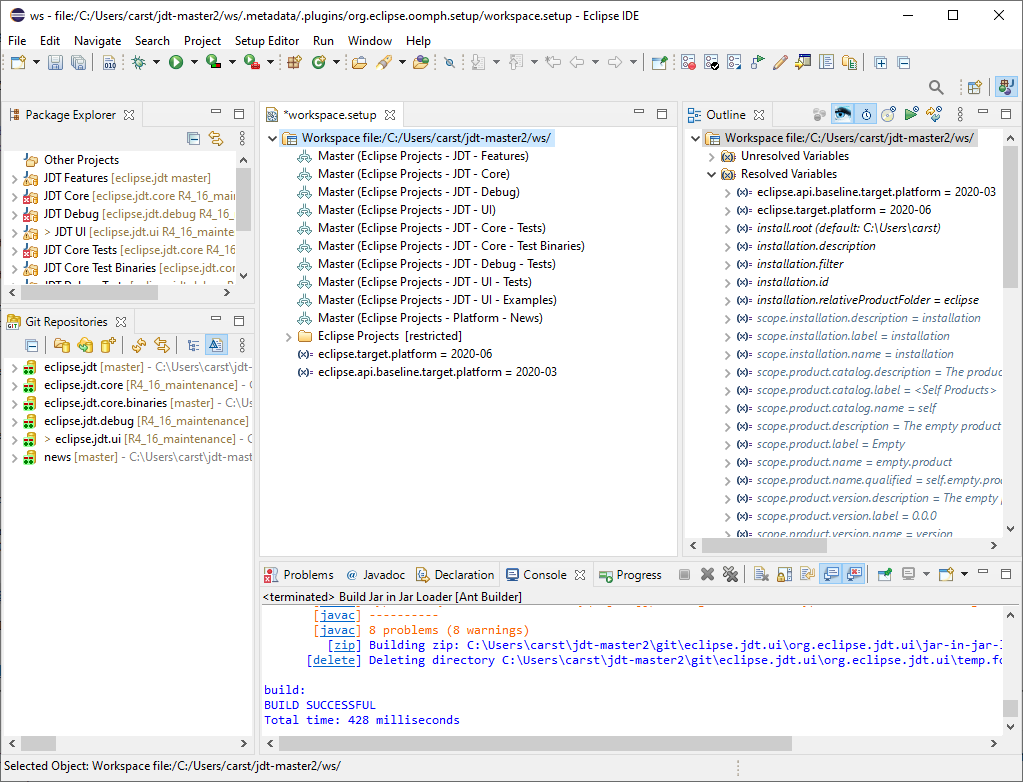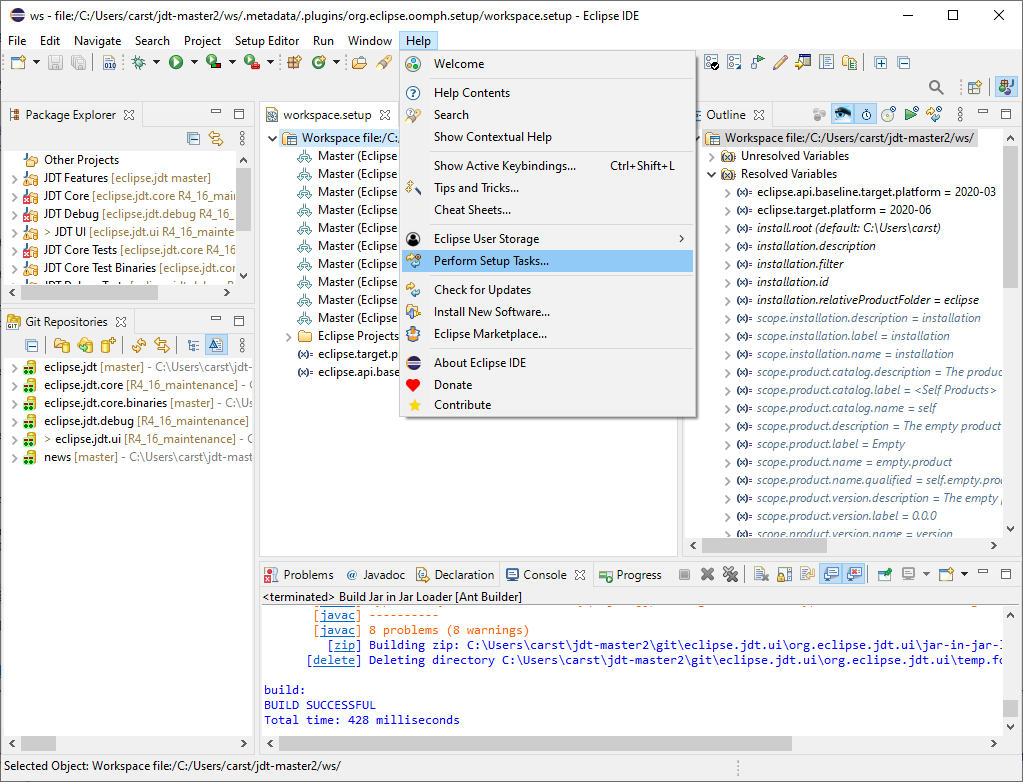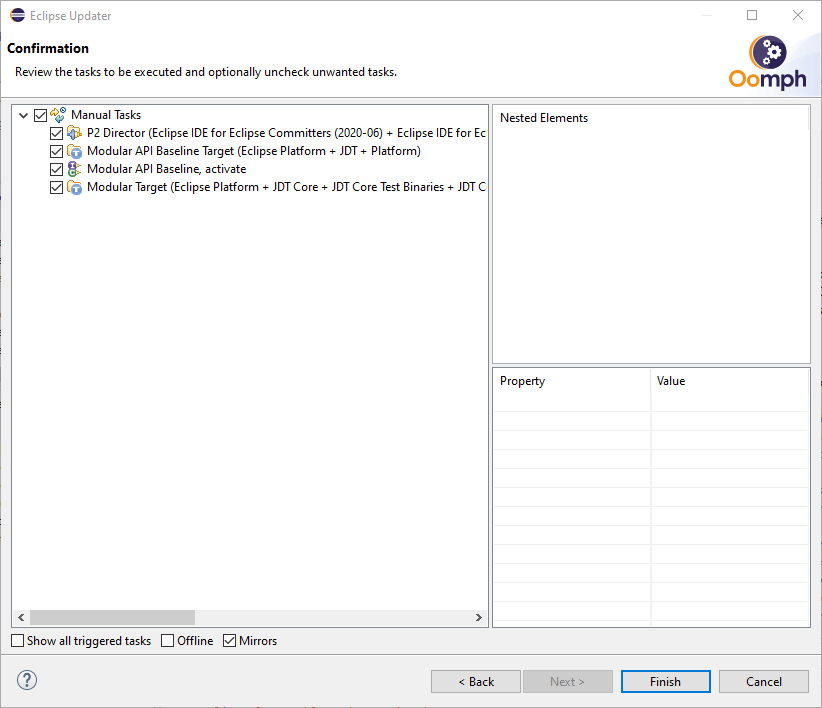Notice: This Wiki is now read only and edits are no longer possible. Please see: https://gitlab.eclipse.org/eclipsefdn/helpdesk/-/wikis/Wiki-shutdown-plan for the plan.
JDT Code Setup Using Oomph
This page is a simple starting point for where to begin when wanting to contribute to the JDT project using Oomph. The goal of this wiki page is to help users to set up coding workspace for JDT components using Oomph.
Contents
Setting up Oomph
Oomph can be extracted to a local folder after downloading it from Eclipse Installer (by Oomph).
You can learn more about the Oomph project at https://projects.eclipse.org/proposals/oomph
FAQ is available at Eclipse_Oomph_FAQ
Using Oomph
Selecting Advanced Mode
Code setup using Oomph Installer for Eclipse is available in Advanced mode.

Commonly used Preferences
Eclipse has many workspace-specific preferences. Oomph helps us set the preferences across all workspaces.
Oomph can manage following preferences and by enabling the last preference (Enable Oomph Preference Recorder), any preference set later can be managed by Oomph:
- Refresh Resources Automatically?
- Show Line Numbers in Editors?
- Check Spelling in Text Editors?
- Execute Jobs in Background?
- Encode Text Files with UTF-8?
- Enable Oomph Preference Recorder?
Eclipse Product and Version selection
Select Eclipse Product as "Eclipse IDE for Java Developers"
Product version can be selected as required.
Project Selection
Projects to be selected for components JDT Core, JDT UI and JDT debug:
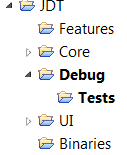
Variable Selection
Rules and details for Install, Workspace and JRE can be selected based on user choice. For each project (Core, UI and Debug) Git Feature repository connection method needs to be selected. For Core Project there are 2 repositories( Core and Binaries). User can use Git or Gerrit based on there convenience. User without Commit rights should use HTTPS and with commit rights should use SSH. If they have Gerrit account, they can use HTTPS(read-write, gerrit). HTTP (read only, anonymous, direct) will be the simplest to use.
Wait for the setup to complete
After Eclipse launches, the workspace is still being set up for JDT development. See the platform SDK provisioning page for details.
Using Oomph but checkout and prepare older branch (2020-06)
Eclipse IDE for Eclipse commiters
Choose the "Product Version" you want. Take care of the java version. For 2020-06 we need java 8.
Projects
Choose the projects - all JDT projects and platform news for the "News & Noteworthy" pages could be useful.
Variables
It automatically increases a postfix number in case you have already a oomph based project with the same name.
Review
Review tasks
Task execution
Now you have to wait for the git fetch operation.
First build
After everything is there it builds all projects.
Switch git branch
To switch to the 4.16 (2020-06) branch you have to open the view for the git repositories.
Double click on the "Remote Tracking" branch for "origin/R4_16_maintenance".
Confirm the dialog to checkout. Repeat that for all git repositories you have.
Switch baseline
Now go to Navigate->Open Setup->Workspace.
Copy and Paste the following snippet to the "workspace" node.
<?xml version="1.0" encoding="UTF-8"?><xmi:XMI xmi:version="2.0"xmlns:xmi="http://www.omg.org/XMI"xmlns:setup="http://www.eclipse.org/oomph/setup/1.0"><setup:VariableTaskname="eclipse.target.platform"value="2020-06"storageURI="scope://Workspace"/><setup:VariableTaskname="eclipse.api.baseline.target.platform"value="2020-03"storageURI="scope://Workspace"/></xmi:XMI>
Task execution to fix baseline
Save. Then Help->Perform Setup Tasks
Hit "Finish" button.
Now you have a checkout of 4.16 (2020-06) where you can work on.
Further reading
- Oomph
- Eclipse Oomph FAQ
- Eclipse Platform SDK Provisioning -- if you want to provision more than just JDT

